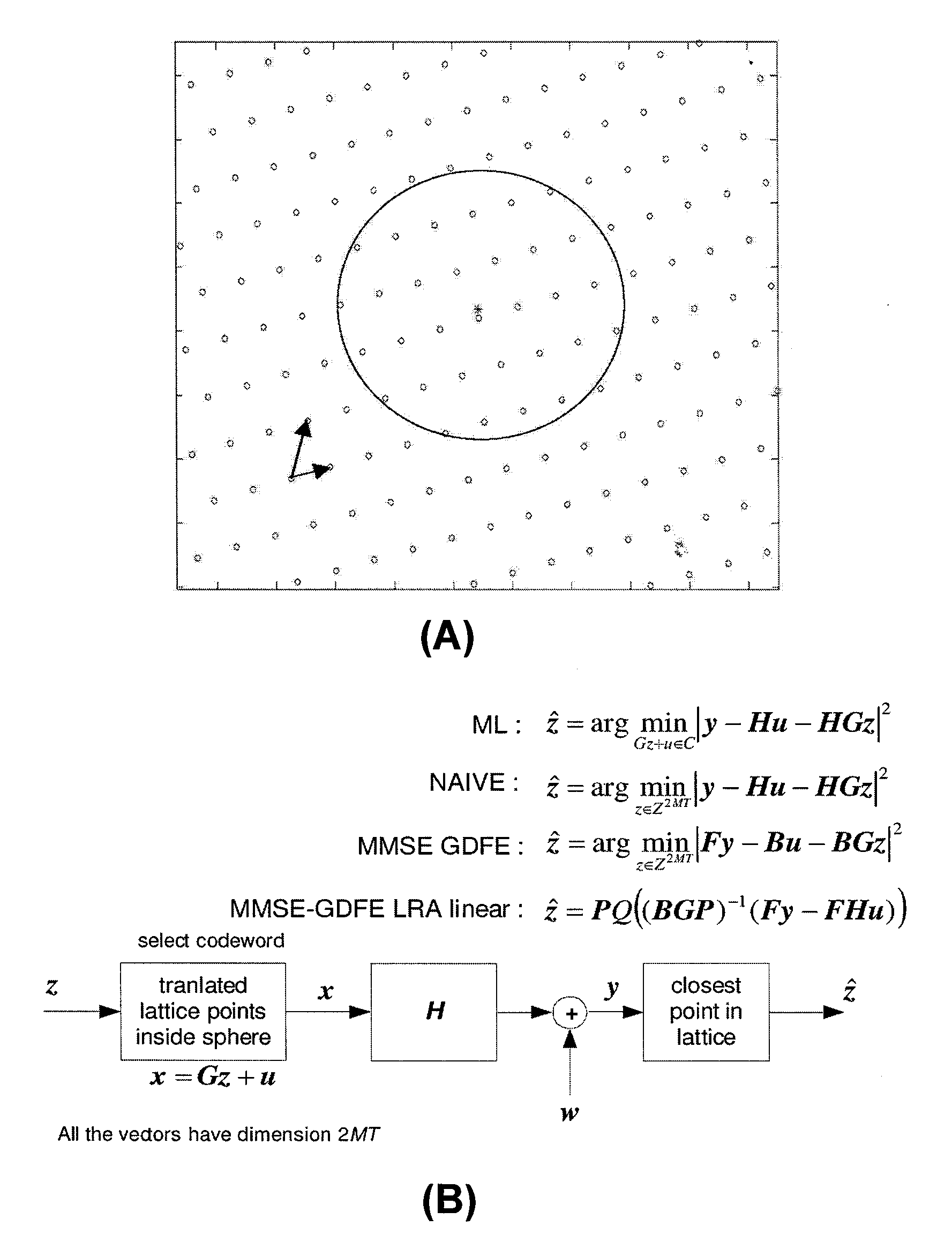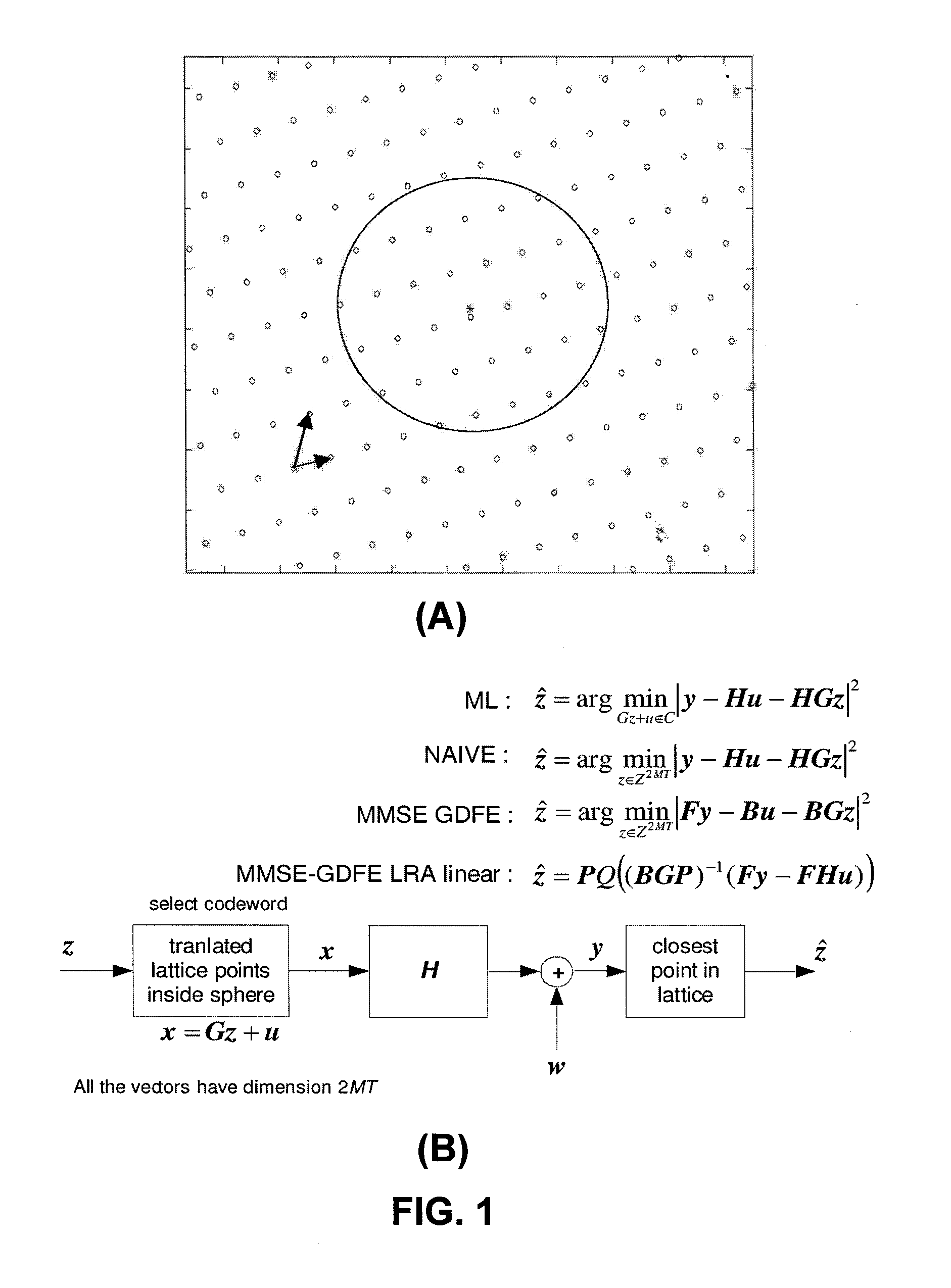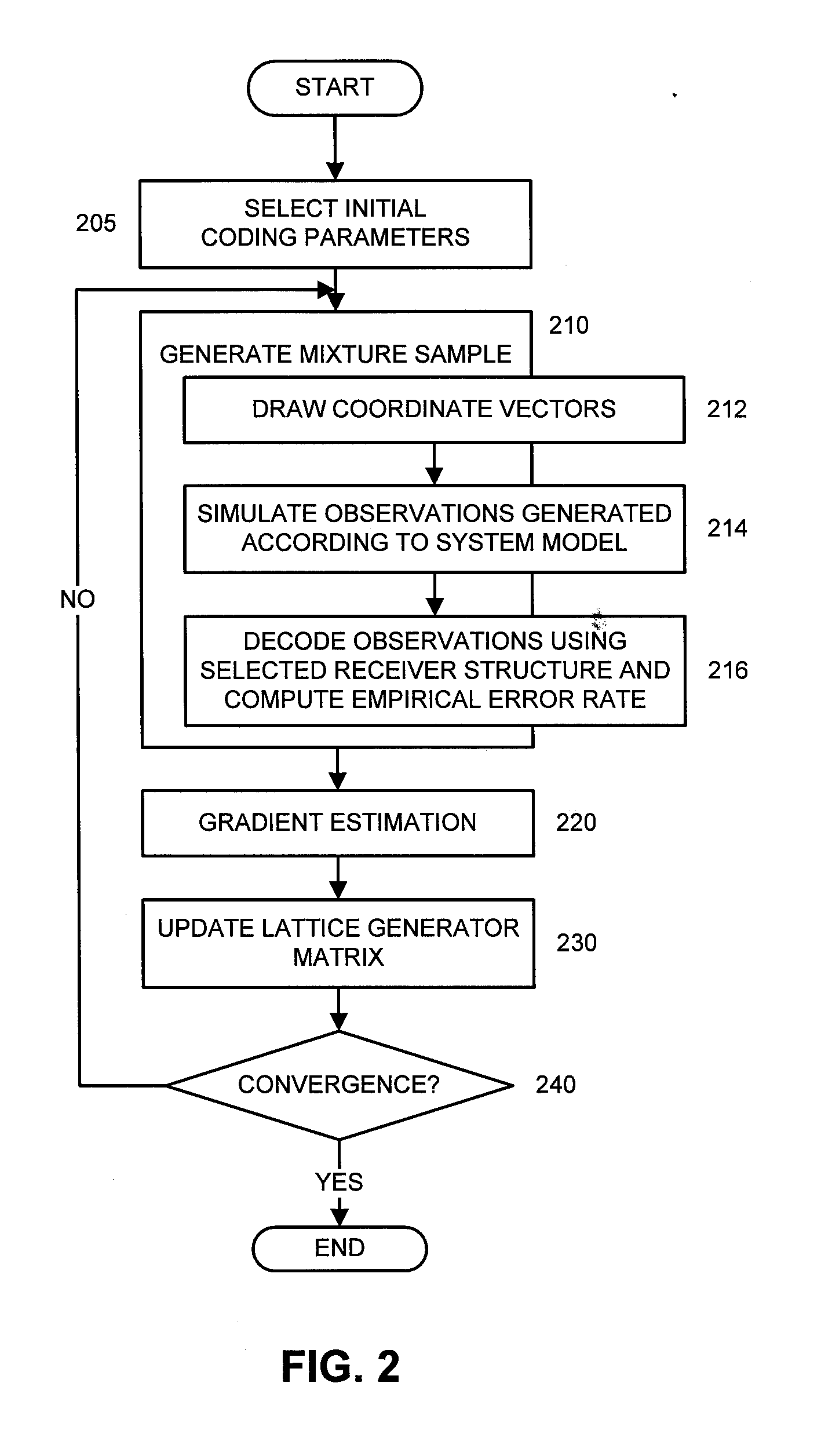Minimum Error Rate Lattice Space Time Codes for Wireless Communication
a space time and error rate technology, applied in the field of wireless communication, can solve the problems of complex error rate minimization, and the lattices are not necessarily error optimal for the general mimo fading channel or other receiver structures, so as to improve the error rate performance of arbitrary receiver structures
- Summary
- Abstract
- Description
- Claims
- Application Information
AI Technical Summary
Benefits of technology
Problems solved by technology
Method used
Image
Examples
Embodiment Construction
[0010] A multiple-input multiple-output (MIMO) communication system with M-transmit and N-receive antennas can be modeled as follows. The wireless channel, which herein is assumed to be quasistatic and flat fading, can be represented by a N×M matrix Hc whose elements hijc represents the complex gain of the channel between the jth transmit antenna and the ith receive antenna and is assumed to remain fixed for t=1, . . . , T. The received signal can be expressed as ytc=ρMHcxtc+wtc,
where {xtcεM: t=1, . . . , T} is the transmitted signal, {ytcεM: t=1, . . . , T} is the received signal, {wtcεM: t=1, . . . , T} denotes the channel Gaussian noise, and with the power constraint E{1 / TΣt=1t|xtc|2}≦M, the parameter ρ is the average SNR per receive antenna independent of the number of transmit antennas. The entries of wt are independent and identically distributed (i.i.d) circularly symmetric complex Gaussian variables with unit variance, i.e., wt,i˜Nc(0, 1). The equivalent real channel mod...
PUM
 Login to View More
Login to View More Abstract
Description
Claims
Application Information
 Login to View More
Login to View More - R&D
- Intellectual Property
- Life Sciences
- Materials
- Tech Scout
- Unparalleled Data Quality
- Higher Quality Content
- 60% Fewer Hallucinations
Browse by: Latest US Patents, China's latest patents, Technical Efficacy Thesaurus, Application Domain, Technology Topic, Popular Technical Reports.
© 2025 PatSnap. All rights reserved.Legal|Privacy policy|Modern Slavery Act Transparency Statement|Sitemap|About US| Contact US: help@patsnap.com



